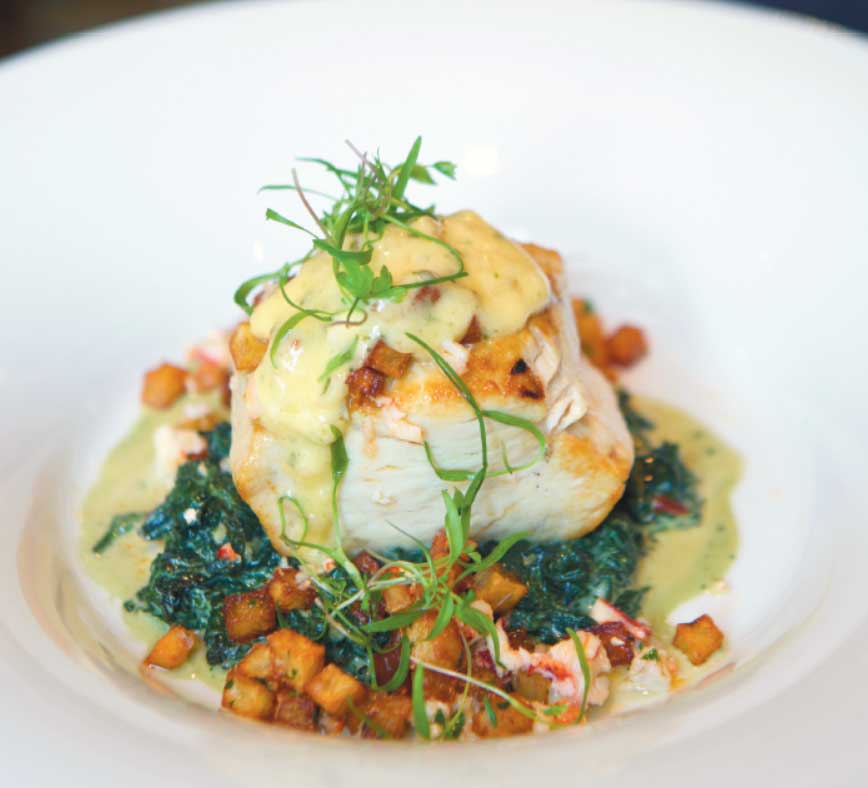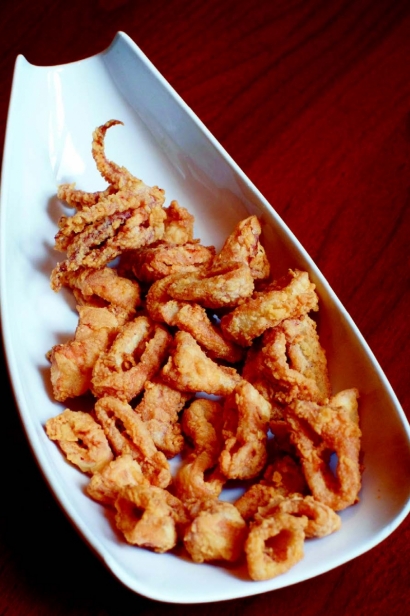JERSEY BOY, MANHATTAN CHEF
Telepan is the Jersey boy who became one of the first true believers in locavore cuisine, religiously advocating farm-to-table before it became a catchphrase.
Bill Telepan, one of Manhattan’s most iconic chefs, is waving and making goofball faces at his kitchen staff. It’s a holiday weekend, and the lunch crowd at Oceana, the Michelin- starred seafood restaurant in midtown, is unusually light.
“I think I’m funny,” says Telepan, explaining his management style. “I just brought in people who laugh at my jokes.” He boasts a starred career. Telepan was executive sous chef at Gotham Bar and Grill, and he worked at Le Cirque, Le Bernardin and the former Judson Grill. For 10 years, his eponymous restaurant on the Upper West Side remained a reigning favorite of the neighborhood. Until it closed in May 2016, because even the Upper West Side has trouble sustaining green-market sensibilities amid a climate of rapidly rising real- estate costs.
Oceana, across the street from Radio City Music Hall, is a seafood powerhouse. The kitchen burns through 2,000 lemons a week.
Since he began as executive chef last fall, Telepan has added his own flair to the Oceana menu. His sea bass crudo is elegant and modern. His sea bass crudo is elegant and modern, clean and bright and complete as a sonnet, with pickled cherry tomatoes, shal- lots and mustard seeds to pique the seductive fish. His swordfishsteak, on the other hand, runs in the opposite direction, and is as sturdy and salacious as a Manhattan backroom power play, a fat alabaster pillar of seafood with old-school accompaniments: hollandaise, creamed nettles and a lobster hash. Lordy.
Even on slow days, trays of fried fish parade through the dining room. The kitchen prepares more than 600 pounds of French fries each week.
Telepan, being a Jersey boy, sneaks in a half-order of fries each day. Also calamari. And the restaurant’s onion rings?
They now are made with sourdough, a nod to the perfect onion rings of Telepan’s youth—those fat, hot, crunchy onion rings that were the marquee selection during weehour gatherings with his friends at the Peterpank Diner in South Amboy. (The diner closed in 2015.)
His weakness for calamari and onion rings notwithstanding, Telepan is best known among his peers for his purist approach. The performance that is restaurant theater begins with the perfect cast. The ingredients must be fresh, and they must sing. Telepan was a green-market chef before there were green-market chefs.
And now, at Oceana, he’s translating that green-market approach to seafood. Which means Jersey oysters— Cape May Salts.
Actually Telepan discovered Cape May Salts while at his previous restaurant. He so loved them, he had boxes FedExed directly to the restaurant. When he started at the menu.
Telepan, like many of his chef peers, is direct and candid. Talk to someone else in the industry— an oysterman or a winemaker—and you are talking to a poet. Each strives to find the precise word to describe the high notes and the undertones, the lingering finish. Talk to a chef. Not so flowery.
Telepan explains his infatuation with Cape May Salts in a blunt, straightforward manner, as if it were obvious to the world:
They’re the perfect size. They’re well-balanced. They have just the right amount of brine.
They also sell like mad, he says, and are as popular as that other East Coast standout, Glidden Points





